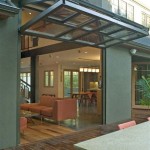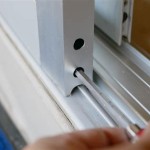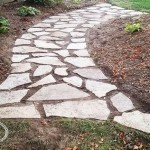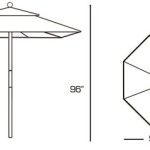Brick Pavers Patio Designs: A Comprehensive Guide
Brick pavers offer a timeless and versatile option for patio construction, blending aesthetic appeal with durability and functionality. Their enduring popularity stems from their ability to complement various architectural styles and landscaping designs, providing a durable and visually pleasing outdoor living space. The selection of a suitable brick paver patio design requires careful consideration of factors such as patio size, intended use, budget constraints, and aesthetic preferences.
This article provides a detailed exploration of brick paver patio designs, examining different laying patterns, brick types, and design considerations. Understanding these elements is crucial for creating a patio that is both beautiful and functional, increasing the value and enjoyment of any outdoor area.
Evaluating Different Brick Paver Laying Patterns
The laying pattern significantly impacts the overall look and structural integrity of a brick paver patio. Different patterns offer varying levels of visual complexity, ease of installation, and load-bearing capacity. Choosing the right pattern is vital for achieving the desired aesthetic and ensuring the patio’s long-term stability.
The *running bond pattern*, characterized by bricks laid in rows with each brick offset by half its length from the bricks in adjacent rows, is one of the most common and simplest patterns. This pattern offers a classic and clean look and is relatively easy to install, making it a popular choice for both DIY projects and professional installations. Its simplicity also contributes to its cost-effectiveness, as it requires less cutting and fitting of bricks.
The *herringbone pattern* presents a more visually intricate design. Bricks are laid at a 45 or 90-degree angle to each other, creating a distinctive zigzag pattern. This pattern is known for its structural strength, making it suitable for areas with heavy foot traffic or potential for vehicular use. However, the herringbone pattern requires more precise cutting and fitting, increasing installation time and potentially the overall cost.
Another popular pattern is the *basketweave pattern*, where pairs of bricks are laid perpendicularly to each other, creating a woven effect. This pattern is less structurally robust than the herringbone pattern but offers a unique and visually appealing aesthetic. It is often used in smaller patio areas or as a decorative element within a larger patio design. The basketweave pattern can be adapted by alternating colors or textures of bricks to further enhance its visual impact.
The *stack bond pattern* is characterized by bricks aligned directly above each other, forming straight lines. This pattern is simple and modern, offering a clean, minimalist aesthetic. However, it is generally less structurally sound than other patterns, as the straight lines offer minimal interlocking. It's most suitable for light-use areas and may require additional edging support to prevent shifting. The stack bond pattern is frequently used in contemporary landscape designs.
Finally, the *circular pattern* involves arranging bricks in concentric circles, often around a central focal point. This pattern creates a visually striking and elegant design, but it is also one of the most complex to install. It requires precise cutting and fitting of bricks to maintain the circular shape. Circular patterns are typically used as decorative elements within larger patio areas or as stand-alone features in garden settings.
Exploring Different Types of Brick Pavers
The type of brick paver significantly impacts the patio's appearance, durability, and maintenance requirements. Different materials offer varying levels of resistance to weather, wear, and staining. Choosing the right brick type is crucial for ensuring the patio's long-term performance and aesthetic appeal.
*Clay brick pavers* are the most traditional option, made from natural clay that is fired at high temperatures. They offer a classic and timeless look with a range of colors, from deep reds to earthy browns. Clay brick pavers are durable and weather-resistant, but they can be susceptible to staining and may require sealing to prevent moisture absorption. They also tend to be more porous than concrete pavers. Their authentic appearance makes them a favorite for traditional and historic landscapes.
*Concrete pavers* are manufactured from a mixture of cement, aggregate, and pigments. They are available in a wide variety of shapes, sizes, colors, and textures, offering greater design flexibility than clay brick pavers. Concrete pavers are generally more durable and less porous than clay brick pavers, making them more resistant to staining and weathering. They are also typically more affordable. The vast range of styles allows concrete pavers to mimic the look of natural stone or other materials.
*Permeable pavers* are designed to allow water to drain through them, reducing runoff and mitigating stormwater issues. They are typically made from concrete or plastic and have small gaps between the pavers to facilitate drainage. Permeable pavers are an environmentally friendly option that can help reduce erosion and improve water quality. They are often used in areas with strict stormwater management regulations. Maintenance involves occasionally sweeping or vacuuming the surface to clear any debris that might clog the drainage gaps.
*Recycled brick pavers* are made from reclaimed bricks, offering a sustainable and environmentally friendly option. They have a unique and weathered appearance, adding character and charm to any patio design. Recycled brick pavers can be more expensive than new brick pavers, but they offer a unique aesthetic and contribute to reducing waste. They may require careful cleaning and inspection to ensure their structural integrity before installation.
*Rubber pavers* are made from recycled rubber tires, offering a resilient and slip-resistant surface. They are ideal for patios used by children or in areas where safety is a concern. Rubber pavers are available in a variety of colors and textures and are easy to install. They are also highly durable and require minimal maintenance. However, they may not offer the same aesthetic appeal as traditional brick pavers.
Important Factors to Consider in Brick Pavers Patio Designs
Planning and design considerations are essential for achieving a successful brick paver patio project. These considerations include the patio's size, shape, location, and intended use, as well as drainage, edging, and accessibility.
The *size and shape* of the patio should be determined by the available space and the intended use. A small patio may be sufficient for a seating area for two, while a larger patio may be required for outdoor dining and entertaining. The shape of the patio can be rectangular, square, circular, or irregular, depending on the design preferences and the surrounding landscape. Irregular shapes can create a more natural and organic feel, while geometric shapes offer a more formal and structured look. Careful measurement and layout are crucial for ensuring proper installation and a visually appealing outcome.
The *location* of the patio should be carefully considered, taking into account factors such as sunlight exposure, prevailing winds, and proximity to the house and other outdoor features. A patio located on the south side of the house will receive more sunlight, while a patio located on the north side will be shaded. It is important to consider the impact of sunlight on the comfort and usability of the patio. Also, consider proximity to trees and shrubs. Roots can damage the patio over time and falling leaves and debris require regular cleaning. Furthermore, accessibility is a vital point; for example, the patio should be easy to access from the house and other areas of the yard.
*Drainage* is a critical consideration for any patio project. Proper drainage will prevent water from pooling on the surface and causing damage to the pavers. The patio should be sloped slightly away from the house to allow water to run off. A drainage system, such as a French drain or a surface drain, may be necessary in areas with poor drainage. Neglecting drainage can lead to costly repairs and premature deterioration of the patio surface. Ensuring proper drainage is a proactive step that extends the lifespan of the patio.
*Edging* is essential for containing the pavers and preventing them from shifting or spreading. Edging can be made from a variety of materials, such as concrete, brick, stone, or plastic. The edging should be installed securely and flush with the surface of the pavers. Edging not only provides structural support but also defines the patio's boundaries and enhances its aesthetic appeal. The choice of edging material should complement the pavers and the surrounding landscape.
*Accessibility* should be considered, particularly if the patio will be used by people with mobility issues. The patio should have a smooth, even surface and be free of tripping hazards. Ramps or gentle slopes may be necessary to provide access for wheelchairs or walkers. Adequate lighting is also important for ensuring safe access at night. Consider the needs of all users when designing the patio to create an inclusive and welcoming outdoor space.
Finally, the *overall design* should complement the architectural style of the house and the surrounding landscape. Consider using colors, textures, and patterns that harmonize with the existing features. Incorporating plants, furniture, and other decorative elements can further enhance the aesthetic appeal of the patio. A well-designed patio will create a cohesive and inviting outdoor living space.

Brick Paver Patio Designs Bethesda Md Installation

Brick Paver Patio Design Ideas For Central New Jersey Homes Des Home Renovations

30 Easy Paver Patio Ideas And Designs On A Budget For Small Backyards Pavers Design Brick

9 Brick Patio Ideas For A Beautiful Backyard Bob Vila

Brick Paver Patios

53 Brick Paver Patios Ideas Patio Pavers

10 Tips And Tricks For Paver Patios

Small Patio Pavers Ideas Paver House

Dreamy Paver Patio Design With Seat Wall Plan Mypatiodesign Com

Clay Pavers Are A Natural Extension For New Garden Design Business








